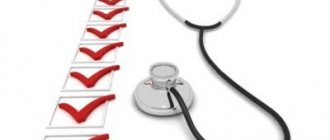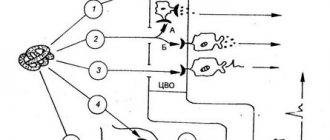Introduction
People can exchange different types of information at different levels of understanding. It is known that communication is not limited to oral or written messages. In this process, emotions, manners of partners, and gestures play an important role.
Psychologists have found that in the process of interaction between people, from 60 to 80% of communications are carried out through non-verbal means of expression and only 20-40% of information is transmitted using verbal
These data make us think about the importance of non-verbal communication for the mutual understanding of people, pay special attention to the meaning of human gestures and facial expressions, and also generate a desire to master the art of interpreting this special language that we all speak without even realizing it.
The peculiarity of non-verbal language is that its manifestation is determined by the impulses of our subconscious, and the absence of the ability to fake these impulses allows us to trust this language more than the usual verbal channel of communication.
The success of any business contact largely depends on the ability to establish trusting contact with the interlocutor, and such contact depends not so much on what you say, but on how you carry yourself. That is why special attention should be paid to the manner, posture and facial expressions of the interlocutor, as well as to the way he gestures.
Understanding the language of facial expressions and gestures allows you to more accurately determine the position of your interlocutor. By reading gestures, you provide feedback, which plays a decisive role in the overall process of business interaction, and the set of gestures is an important component of such communication. You will be able to understand how what you say is received - with approval or hostility, the interlocutor is open or closed, busy with self-control or bored.
Knowledge of body language and body movements allows you not only to better understand your interlocutor, but also (more importantly) to foresee what impression what you heard made on him even before he speaks out on this matter.
In other words, such wordless language can alert you to whether you should change your behavior or do something different to achieve the desired result. All this allows us to conclude that if you want to achieve certain results in relationships with partners, interlocutors or simply colleagues, then you need to master at least the basics of non-verbal, i.e. wordless communication.
advertising is not displayed
The purpose of this work is to consider the essence and main characteristics of nonverbal communications.
In accordance with the goal, the objectives of this work are:
- analysis of kinesic features of nonverbal communication;
- disclosure of proxemic features of nonverbal communication;
- study of visual contact in nonverbal communication;
- consideration of cross-national differences in nonverbal communication.
Non-verbal communication. Truth or myth?
Some doubt the existence of body language, considering all conversations on this topic to be empty fiction.
Opponents of the theory of postures and gestures argue that changes in body position occur for completely different reasons. For example, when sitting, it is more convenient for a person to cross his arms if there are no armrests, and not at all because he is a misanthrope.
People start yawning not only because they start to get bored. Lack of oxygen in a cramped office or overwork can trigger this process. Therefore, before formulating conclusions, it is necessary to understand why the interlocutor began to actively gesticulate or rotate an object in his hands.
An experiment will help reveal sign language. And the subjects can be friends and relatives, whose facial expressions, postures and gestures change in different life situations. But in no case should you impose and put pressure, otherwise you can damage many years of friendship and good relationships.
How to recognize gestures?
In order to feel confident and comfortable in a situation of communicating with different people, to avoid manipulation, you should learn to recognize non-verbal language of communication in situations where they are trying to deceive you.
What means of nonverbal communication, gestures, postures, and facial expressions should you pay attention to in order to recognize a lie?
- excessively long or frequent pauses, pauses and hesitations before starting a line;
- asymmetry of facial expressions, lack of synchrony in the work of facial muscles, when there is a discrepancy in the facial expressions of the two sides of the face;
- a “frozen” facial expression, when it does not change for 5-10 seconds, is false;
- delayed expression of emotions, when long pauses arise between the word and the emotions associated with it;
- a “long” smile, where the lips are pulled back from the teeth, creating a narrow lip line;
- visual contact is shallow, when the liar's eyes meet the interlocutor's eyes for no more than a third of the entire conversation, while often looking at the ceiling and around with a restless expression on his face;
- twitching of any part of the body: tapping fingers on the table, biting the lip, twitching of arms or legs;
- scanty gestures that the liar keeps under control;
- high pitched voice, heavy breathing;
- bent body, crossed-legged poses;
- poor facial expressions, weak work of the facial muscles;
- quickly moving the eyes first to the upper right corner, and then to the lower left;
- quick, imperceptible at first glance, touching the nose, rubbing the eyelid;
- brighter gestures with the right hand compared to the left;
- any exaggeration: unnecessary movements and gestures, inappropriate emotions;
- frequent eye blinking
Knowing all the subtleties of non-verbal communication techniques, you will not only be able to avoid manipulation, but you yourself can easily learn how to manage people
The main thing that any student of body language strives for is the ability to detect lies in the speech of the interlocutor. They say about dishonesty:
- Frequently touching the face, scratching the forehead and nose, covering the mouth with the hand. A person literally tries to stop himself from telling a lie, to cover his face, avoiding a direct condemning gaze.
- Stroking, scratching the neck. Talks about lies caused by fear or misunderstanding. Such gestures are often demonstrated by subordinates when talking with their boss.
- Touching the earlobe. During communication, touching the ears means that the person does not believe in the information he heard, but tries not to show it.
- Quick, frequent smiles, licking lips. It means excitement, a desire to hide deception.
To get a complete picture of the correspondence of gestures and facial expressions to a person’s words, you need to evaluate the meaning of all movements:
- Gait. By the way the interlocutor enters the room, you can assess the degree of confidence and self-esteem: a long step, a confident gait - purposefulness and ambition, a shuffling gait - lack of will and aspirations, a slow, imposing gait - narcissism and demonstrativeness.
- Hand position while moving and sitting. Elbows pressed to the body indicate isolation, unsociability; broad gestures, waving your arms when talking - openness, sociability. Touching your interlocutor is a desire to enter the zone of closest trust, a desire to subjugate.
- Direction of view. The position of the eyes shows how interested the interlocutor is in the conversation and the desire to defend his point of view. A downward gaze means the person is telling the truth; an upward gaze means he makes it up as he goes along.
- Posture. A straightened neck and a raised chin indicate a person’s general confidence; a bowed head is a sign of humility and timidity.
- Body direction. A body leaning forward means interest in the conversation, sympathy for the interlocutor, a desire to reduce the emotional distance, and gain trust.
If a person often changes position during a conversation, his opinion is unstable. He is ready to accept someone else's point of view and submit to his interlocutor.
How does the behavior of a lying person manifest itself?
- Often, after telling a lie, the following gestures are observed - loosening a tie, touching the neck, nose, covering the mouth. They often hide their hands during a conversation and may fidget or sway, which indicates anxiety. The opposite behavior also happens - they stand motionless, as if petrified, without showing emotions. They gesture a little, because the brain is busy inventing and controlling the telling of the story.
- Position of the legs - they can swing their legs, showing nervousness, impatience, often the legs are facing in the other direction from the interlocutor. They can make sudden movements with their shoulders, touch the interlocutor, trying to “earn their way into trust.”
- Facial expressions - they hide their gaze, look in the other direction, have a darting gaze, or vice versa do not avert their gaze, look straight at them. The smile is usually strained, unnatural, only movement of the lips, and no changes are visible in the corners of the eyes. Frequent blinking also expresses nervousness or a desire to hide information or feelings.
- Speech - usually spoken in a calm tone, giving meaning to words. They may raise their tone when they are bragging or in an excited state. Usually, a change in the tone of speech does not happen by accident; watch the tone and words. They may stammer, “moo,” make other sounds, and lose their thoughts.
Superwoman pose
And if you are nervous before a serious conversation or meeting, then try to calm yourself down with the help of the “super-woman” pose - sit straight, at the full depth of the chair, hands on your knees, back straight, shoulders relaxed and apart, chin high, gaze straight ahead. .
Take 15-20 deep breaths, imagining how stress is released from the body as you exhale, and feeling the stability of your posture. This exercise helps bring your parasympathetic nervous system back to normal (heart rate slows, breathing becomes more regular, sweating decreases, and you generally feel more in control).
Ready? Great, go into the meeting feeling confident and in the right position. And don't forget that your tongue may lie, but your body will still tell the truth.
The eyelids are drooping.
The interlocutor isolates himself from you, listens inattentively, or does not want to show his disinterest. When negotiating, you can use the technique of controlling the interlocutor’s gaze. This is especially helpful if you are involved in a presentation using diagrams, drawings, or designs. It has been proven that a person perceives 87% of information through the eyes, 9% through the ears and 4% through the other senses. Looking at a drawing, a person perceives no more than 9% of what is said, unless the information is directly related to what he sees before his eyes. If connected, then up to 30% is perceived. In order for you to convey more information to your interlocutor, try to establish control over his gaze. Take an object in your hand, for example, a pen, and during the conversation, point it to the diagram while telling the story. When you need to attract the attention of your interlocutor to words that do not need illustration, raise the pen to the level of your eyes - your counterpart will willy-nilly look into your eyes and will more easily understand everything you say. Try to keep the open palm of your other hand in the interlocutor’s field of vision - this will make your words more credible.
Scientific research
Representatives of Ancient Rome already possessed the study of body language and the desire to characterize gestures. The science formed on the basis of the observations of researchers was called kenesics. The greatest contribution to its development was made by:
- J. Balwer. He created a fundamental work devoted to gestures, in particular, hand movements.
- I. F. Lavater. He studied physiognomy and conducted a comparative analysis of emotions and gestures.
- G. K. Lichtenberg. He published several works in which he examined Lavater’s ideas in detail, calling them superficial and far from reality.
- C. Bell. He studied the nervous system, studied the correspondence of facial features to the emotions experienced. He deduced a pattern between emotional reaction and muscular activity.
- C. Darwin. Studied the correspondence of facial expression to emotional reaction.
- F. Bacon. I came to the conclusion that there is a special body language that is understood by all peoples of the world.
- F. Lowen. In his book on the psychology of the body, he outlined the basics of psychosomatic problems
Psychologists and sociologists believe that body language can become a universal means of communication between people of different social groups.
Facial expressions
Facial expressions are universal, understandable to the interlocutor regardless of knowledge of the language. The whole range of emotions is instantly reflected on the face, the expression of the eyes, the tilt of the head, and the articulation of the lips change. It should be borne in mind that it is not difficult to learn to control facial expressions; in fact, even children try to do this, for example, by opening their eyes falsely wider when it is necessary to portray surprise and admiration in response to a gift, although the gift itself has long been discovered in the parent’s closet and is not a surprise. There are trainings that allow, if you don’t teach how to control the emotions themselves, then at least learn how to mask their reflection on the face and keep a mask.
Nonverbal communication
Definition 2
Nonverbal communication is a system of signs and symbols that is used to convey a message and intended for its most perfect awareness, which to a certain extent does not depend on the psychological and socio-psychological properties of the individual, which has a fairly clear range of meanings and can be presented as a specific sign system.
People need non-verbal means of communication to clearly understand each other. Naturally, nonverbal manifestations relate only to oral communication. Since the external nonverbal expression of feelings and emotions performed by the body is also represented by a certain set of signs and symbols, it is often called “body language.”
Too lazy to read?
Ask a question to the experts and get an answer within 15 minutes!
Ask a Question
Nonverbal communication consists of two large groups: extralinguistic and paralinguistic means of communication.
Paralinguistic group:
- Prosody. This group is supposed to include components that complement speech. These are the timbre, strength and depth of the voice, the amount of expressiveness of articulation, stress, length and nature of pauses, etc. In other words, means of the prosodic level make it possible to impart a nuance to information by influencing the voice.
- Kinesics is a complex of body movements (gestures, facial expressions) that are used during human communication (excluding movements of the speech apparatus).
- Graphemics is a way of writing that conveys a person’s emotions and feelings. The manner of writing words and letters may change depending on the emotional background. So, say, an angry person presses his pen hard on the paper, but a thoughtful person may make mistakes and forget to complete the “hooks.”
Note 1
Paralinguistic means of communication cannot be used without reference to speech.
Extralinguistic group:
- Takeshiki is a non-verbal means of communication that is based on tangible signals transmitted by people to each other. These include kissing, hugging, patting, stroking, shaking hands and other communicative actions.
- Proxemics. Interlocutors in the process of interaction can be located at a distance or close to each other, deliberately or subconsciously exercising distance control. The method of organizing contact in space, which reflects the relationship of the interlocutors to each other, is called proxemics.
- Chronemics. Distribution of time during communication. A person may be in a hurry to get to a meeting, or he may put off the call. He can wait a long time for the interlocutor to become free, or he can reduce the contact time.
- Extralinguistics. Conveying emotions with the support of the voice, but without reference to speech. These means include dissatisfied rumbling, coughing, sighs, screams, etc.
- Sensory. Perception of the interlocutor using the senses. A person responds to the smell, the tenderness of the skin during touch and the visual perception of the interlocutor. There are also separate subgroups here. An example here would be olfactory means of communication (perception through smell) and phonation means of communication (hearing perception).
There is no need to learn non-verbal communication, as these are innate skills.
Pose
When communicating about the interlocutor, his body position can say a lot. This sign is also poorly controlled, since parents from childhood teach the baby to control his gestures and emotions, and pay attention to posture extremely rarely. During communication, the posture may change depending on the content of the conversation and the relationship of the interlocutors with each other.
Thus, psychologists distinguish three groups of postures:
- Open and closed. Openness is evidenced by a relaxed posture, turning the body towards the interlocutor, and open palms. About closedness - crossing legs and arms, tilting the body away from the interlocutor, interlocking fingers, constantly trying to hide the palms.
- Dependent and dominant. The dominant person tries to appear taller, hover over the interlocutor, look down on him, pat him on the back or shoulder. A dependent person lowers his head, averts his eyes, and looks from under his brows.
- Harmonious and opposing. In a harmonious conversation, the interlocutors take positions that correspond to each other. In the event of a confrontation, fists may be clenched, one shoulder is forward, the chin is raised, and the hands are placed on the sides or hips.
Nonverbal communication what is it in psychology
Nonverbal communication is a type of communication without the use of words (through images, intonation, gestures, facial expressions). The tools for influencing a person are:
- sight;
- interpersonal space;
- optical-kinesthetic signals (facial expressions, appearance of the interlocutor, pantomime);
- peri-speech factors – vocal range, vocal qualities, timbre;
- extra-speech (laughter, speech rate, pauses).
For your information. Nonverbal methods of communication improve mutual understanding between people, allow you to predict the mood and attitude of the interlocutor towards the individual, and predict your own communication model.
Basic terms and concepts
For a more detailed understanding and study of the psychology of facial expressions and gestures, let us turn to the basic concepts.
- A gestural refrain is a repeated action, a movement that always means the same thing.
- Dictionary of psychoanatomy symbolism - deciphering non-verbal communication. Using this dictionary you can understand what a particular gesture means. It is only necessary to learn the interpretation by examples, since the same gesture can have different meanings.
- Ergonomics of facial expressions and gestures is a section that talks about the ability to adapt nonverbal communication to solve certain issues. Studying this section makes it possible to positively influence a person’s subconscious. Fraudsters especially like to use this method.
The Origin of Nonverbal Communication
Nonverbal language has two types of origin: biological evolution and culture. Biologists have found that facial expressions when expressing emotions, most gestures and body movements in people are innate and serve as a signal for feedback. The biological nature of nonverbal communication is confirmed by elements not controlled subconsciously:
- paleness or redness;
- enlarged pupils;
- curvature of the lips;
- blinking.
Based on intentional and unintentional communication, there are 3 nonverbal means of communication:
- Behavioral factors. Caused by a physiological reaction: sweating from excitement, trembling in case of cold or fear.
- Unintentional means. Associated with people's habits (scratching temples, swinging legs, biting lips).
- Communication signals. Conveys brief information about an object, event, or state.
There are also universal signals known to everyone that are characteristic of a particular culture. Vivid examples are the style of behavior, dress code, and conventional signs of greeting and farewell.
Common “body signs”
The importance of sensorimotor signals
The ability to correctly interpret nonverbal signals is of great importance in modern human life. After all, it is precisely such gestures that most fully express human feelings and experiences. In some cases, emotional experiences can be so strong that without verbal signals it is almost impossible to convey the whole gamut of overwhelming emotions. In addition, these gestures allow you to establish deeper communication contact between interlocutors.
Often, such knowledge allows one to achieve certain results in entrepreneurial activity. The main feature of nonverbal signals is that a person cannot control them. Examples of using such means of communication allow you to learn to detect false notes in the words of your interlocutor and avoid attempts to manipulate your behavior.
A person who knows the basics of nonverbal communication better understands the interlocutor, which allows him to distinguish lies from the truth.
The meaning of gestures and facial expressions using specific examples
Theoretical knowledge must be examined in specific, simulated situations. This is the only way to correctly understand what the interlocutor is “silent” about. Let's look at how the interlocutor's feelings are connected with the movements of various parts of his body.
Lips
Most often, self-confidence is associated with lip mobility.
Example 1.
The interlocutor, leaning his elbow on the armrest of the chair, rubs his lips with his index finger, without making a single sound.
This means that the person is confused and does not know what decision to make. The interlocutor thinks that they are trying to manipulate him, and his gesture is tantamount to uncertainty. This example is not frequent, but it is very eloquent.
Example 2.
The interlocutor’s tightly pressed lips ceased to be visible at all.
There are two options here:
This shows the person as virtuous, quite experienced, wise.
Disgust. Moreover, it is close to complete rejection. This is a more common option.
In this case, the context of the conversation is important. If during a conversation you mentioned something unpleasant or touched on some topic that was painful for the interlocutor, then this can be seen in his pursed lips. In this case, it is worth taking the conversation aside and changing the topic to a neutral one.
Example 3.
The interlocutor bites his upper or lower lip.
This means a person's dissatisfaction. Perhaps your interlocutor is exhausted and emotionally overloaded. If a woman bites her upper lip, she is usually afraid of something.
Also, this gesture can be considered as seduction, then it indicates amorous excitement.
Back
The back is the center of sensuality, also responsible for the ability to put maximum effort into something.
Example 1.
The interlocutor gave his friend a friendly slap on the back.
This is a direct expression of sympathy or just a good mood. They say it's a shortened version of hugging.
It is worth noting that this gesture does not always mean something good. Read part of the article about the ergonomics of gestures.
Example 2.
The interlocutor communicates with you with his back turned.
If men take this position, it indicates their inability to make decisions. This also indicates a lack of leadership qualities, because those who have them will openly meet any turn of the situation and resolve issues while facing their interlocutors.
Brushes
The hands are the most active and mobile part of the body; they can tell a lot.
Example 1.
If your interlocutor holds his hands in a “prayer” pose, then this means an irreconcilable gesture rather than a condescending one. You should be prepared for the fact that your interlocutor will object to what you said.
Example 2.
The interlocutor closes his hand, as if holding something small in it.
This gesture means that the person is only taking, not giving. This is a symbol of selfishness.
Jaw
The jaw is associated with anger in all its negative manifestations.
Example 1.
Does it happen that a person starts grinding his teeth in the middle of the night? So, this is not a habit or a feature of the body at all, it is nothing more than anger. Most often, a person who has experienced a very angry and dark situation during the day involuntarily manifests this at night through a dream.
Example 2.
The interlocutor's jaws are constantly in a hidden chewing process. This indicates a very changeable personality.
Example 3.
The veins seem to be pulsating under the skin, and tears are about to flow from the eyes. This is a sign that the interlocutor is clearly losing his composure, he is greatly shocked by something and is keeping his emotions to himself with all his might.
In the article we consider only basic examples; in addition to them, the psychology of facial expressions and gestures examines many situations and contexts.
Thanks to this knowledge, everyone has the opportunity to feel the essence of their interlocutor’s behavior, to understand what they are actually experiencing and feeling.
It’s unfortunate, but people tend to lie, hide something, or omit something. The psychology of facial expressions and gestures will help shed light and clarity on many situations; such serious knowledge can save you from trouble.
Types of Gestures
There is a whole science about gestures. The body technique, which includes facial gestures, head and leg gestures, and gait, is also called steepling. If you study the language of facial expressions, you can accurately determine the mood of your interlocutor, which will allow you to properly build relationships and structure a conversation. Gesticulation during conversation is divided into several types.
Open
To understand how sincere your opponent is, you need to know what gestures of openness exist:
- during a conversation, the interlocutor actively gestures, palms facing upward;
- during the conversation, a person does not move far away from his opponent, on the contrary, he reduces the distance between him and himself;
- during a conversation between business partners, a positive sign is the unbuttoning of a button on a jacket;
- Straight legs also indicate a truthful conversation.
People involved in personnel selection should have knowledge of sign language.
Closed
Psychology also identifies body gestures that indicate a negative attitude or defense due to hostility. The following manifestations are classified as closed:
- arms crossed on the chest are a sign of uncertainty or hostility towards the interlocutor;
- one leg crossed over the other - fencing oneself off from the interlocutor;
- The man bent one arm at the elbow and pressed it to the body, straightened the other and placed it on his knee - distrust.
Body language creates an impression of a person, so during conversations you need to watch your gestures. An experienced interlocutor will easily identify the opponent’s negative attitude.
Erotic
By gestures you can guess that you are in love. Women's gestures are more pronounced, men are more often restrained, they control their emotions. Female body language suggests the following:
- showing the inside of the wrist;
- touching the hair, twirling a curl on a finger, throwing the hair back;
- removing shoes and swinging the leg;
- stroking knees, thighs or calves.
Such flirting is typical of girls, while men prove their love with their actions.
deceitful
Most liars give themselves away with the following gestures:
- hands reach to the face: covers the mouth, touches the chin or lips;
- touching the nose;
- scratching the upper eyelid;
- scratching the neck - a person does not agree, but is afraid to say so;
- touching the ear indicates mistrust.
Looking away is a popular sign of lying. However, such a gesture also indicates that the person is remembering or fantasizing something.
Aggressive
Gestures of hostility are considered separately:
- clenching fists;
- throwing your arms to the side - a mood for action;
- sitting on a chair as if on a horse - a negative attitude towards the interlocutor;
- hands crossed behind the back.
Hiding aggressive gestures is difficult because it is a strong emotion.
Nervous
If a person is irritated, it will be difficult to hide this state. It is manifested by such gestures:
- teenagers bite their nails;
- an adult can chew a pencil, drum his fingers on the table;
- shifting gaze;
- constant change of position, vanity.
In addition, breathing quickens and the gaze wanders.
Bored
Body language can tell you how interested a person is in a conversation. This will be indicated by special gestures:
- the interlocutor props his head with his palm;
- taps his feet on the floor;
- draws on paper, twirls the pen, glances at his watch, examines his hands.
If a person is not interested in a conversation, he will not look the narrator in the eyes.
Trusted
By gestures you can recognize whether the interlocutor has trust. Psychologists identify the following body signs that indicate the opponent’s emancipation:
- the interlocutor sometimes nods his head;
- The elbows of the hands are on the table, the fingers are connected, as if forming a dome.
Open palms indicate complete trust.
Evaluators
From some gestures one can understand that the opponent not only listens to the interlocutor, but also evaluates him:
- props his head up with his palm, with his index finger pointed up;
- takes off his glasses, putting the bow on his lips;
- scratching the chin.
While thinking about a conversation topic, a person may walk around the room trying to make a decision. Even while assessing the conversation, he can pinch the bridge of his nose with his fingers and close his eyes.
Male and female gestures
Men are less likely to express irritation through gestures. It’s easier to assess their mood through their posture: a relaxed posture speaks of trust, openness, and a desire to continue the conversation. Hunching, squeezing your shoulders, putting your hands in front of you is forming a kind of barrier from an unpleasant interlocutor.
A comparative description of the body language of a man and a woman shows that the gestures of the former are more closed, while the representatives of the fairer sex openly show their emotions and passion.
If a man likes a girl, he will demonstrate this with the following gestures:
- straightens clothes or hairstyle, brushes off dust, even if there is none;
- straightens your posture, stretches your stomach, and a bright look appears;
- keeps his hands in his pockets with his thumb facing out;
- has a searching look.
A woman will show her interest in a man as follows:
- straightening your hair, shaking your hair;
- hip swaying;
- look from under eyelashes;
- touching your thighs or waist;
- showing the wrist;
- stroking an elongated object with your fingers (pencil, stem of a glass);
- slightly open mouth, languid voice;
- throwing legs behind legs.
Girls have brighter body language. However, in case of self-doubt, the following gestures may appear: a trembling voice, loud laughter, angular movements.
The importance of interpersonal space
When considering various types of nonverbal communication, special attention should be paid to the importance of interpersonal space. It is this instrument that plays a significant role when trying to establish contact in communication. Frequently used expressions such as “stay away from him” and “want to be close to him” clearly show the importance of this tool. In a situation where people show subconscious interest in each other, they tend to reduce the space between them. In some situations, such behavior is unacceptable, which forces a person to adhere to a certain framework of communication.
Nonverbal communication between a man and a woman who are interested in each other is carried out at a distance of less than fifty centimeters. For this distance the term “intimate” is used . Such a distance is allowed in communication with the other half, close friends, as well as in some sports that involve physical contact. During a friendly conversation, the interlocutors are most often located at some distance from each other. Most often they are located at a distance from half a meter to one hundred and twenty centimeters. This distance is called interpersonal space.
Today, 60% of communication between people is the non-verbal part, what people convey to each other with their bodies, through posture, gestures and facial expressions
The social space between people having a conversation ranges from one hundred and twenty to three hundred and seventy centimeters. Most often, such examples can be seen during business conversations. The formality of the conversation is determined by the distance between the participants in the negotiations. A distance of more than four meters between people is called public space. As the name suggests, this distance is more comfortable for public speaking in front of an audience.
When establishing certain boundaries in communication, one should take into account the gender and age of a person, as well as some features of his personality. Psychologists say that children often try to position themselves as close to their interlocutor as possible, while teenagers feel the need for some detachment . Women, like children, like to talk at a closer distance. Psychologists also say that for people with self-confidence, the distance at which a conversation is conducted is rarely of particular importance, while people with problems with self-esteem try to subconsciously distance themselves from the person.
Nonverbal communication
Nonverbal communication in psychology is called non-verbal communication, that is, communication using facial expressions, gestures, intonation, and body movements.
Knowledge of nonverbal language allows you not only to better understand your interlocutor, but also to find out his attitude to what was said even before he expresses it in words.
Thus, speechless communication performs the following functions:
- establishes contact between communicating;
- strengthen verbal expressions, enrich the communication process;
- express the emotional state of the interlocutor.
Nonverbal communication is of the following types:
- Kinesic. This is a unique set of gestures, poses, and facial expressions that must be interpreted unambiguously. These signs are an expression of a particular culture.
- Tactile signs. These are touches that are used in fairly close communication (friendly, loving, professional).
- Sensory perception. Communication is based on the perception of smells, tastes, colors, etc.
- Paraverbal communication. Involves the expression of voice timbre, intonation, and rhythm of speech when communicating.
- Proxemics. Communication is assessed in terms of the distance between interlocutors. Distance can be personal, professional and public.
In everyday communication, a person tries to understand his interlocutor, first of all, by gestures and facial expressions. The science that studies such communication is called physiognomy.
Eyes.
Pupils. “Look a person in the eye when you talk to him,” says the old saying. With positive excitement, for example, with a loving gaze, the pupils dilate. This reaction is read instantly, on an intuitive level. This is probably why most dates take place in dim light - this makes the pupils dilate, even if the feelings are not sincere. In ancient times, in order to dilate the pupils and therefore appear more desirable, prostitutes dropped belladonna into their eyes. In case of a negative reaction, if a person is angry or annoyed, on the contrary, the pupils narrow to a minimum, and a “snake gaze” appears. Duration of gaze. If a person is trying to hide important information from you or is simply being dishonest, their gaze will meet yours less than a third of the time during the entire conversation.
What is the psychology of facial expressions and gestures?
Facial expressions and gestures play a huge role in communicating with others. They help to strengthen and fully reveal feelings. With the help of facial expressions we express emotions that we do not talk about. Our body is very insidious; we may not notice how we say one thing, but our body language shows something completely different.
Without noticing it ourselves, we give away our hidden intentions and unspoken words. Our body is more eloquent than any speeches and tirades.
It will be difficult for an inexperienced person to figure out where and how his interlocutor lied. But those who are familiar with the topic of facial expressions and gestures are provided with an understanding of the situation and the opportunity to take control of it.
Facial expressions and gestures are very intertwined with each other, so they are always considered in one bundle.
We will do the same and in this article we will answer the most common questions on the topic of facial expressions and gestures.
Human facial expressions and gestures, psychology of influence! Read it, it will be interesting
Psychology of Gestures
Alan Pease, a famous psychologist, is called "Mr. Body Language." The author has published his works in millions of copies. Alana Pease set out to not only teach the reader to “decipher” body language, but also to apply the acquired knowledge in practice. Even the slightest changes do not escape his attention, up to the dilation of the pupils and the closing of the eyelids.
The author, analyzing the smallest details, identifies 2 important priorities.
Firstly, there is an opportunity to establish communications.
Secondly, it is possible with a high degree of probability to calculate a person’s further actions.
From the standpoint of psychological knowledge, Alan focuses on the distinctive features of behavior and gestures in women and men.
In addition to gender differences, the body movements of managers and subordinates differ sharply. Watching a conversation, you can record the rapid change of emotions.
Gestures, facial expressions, body movements. Four codes of communication
Nonverbal relationships - body movements, gestures, facial expressions - is a whole science and everyone can master it. You can calmly read the true thoughts of a liar based on his voice, behavior, and gestures.
Interesting! “He who lies in the language of words betrays himself in the language of gestures, to which he does not pay attention,” wrote the philosopher and historian O. Spengler.
A person perceives by ear only the speech and voice of the interlocutor. People receive facial expressions and gestures visually.
Prose writer and poet Igor Guberman wrote: “I have long been dividing people: by word, tone, gesture, look - into those for whom I myself will pour a drink and those with whom I will not sit next to a drink!”
Lilian, author of the scientific book “I Read Your Mind,” divides all communication between people into four codes. A person’s mood, his obvious and secret thoughts are determined by:
by voice - tone, tempo, range, distinctive features;
by speech - words used by a person. Vocabulary, speech patterns;
by body gestures - movement of arms and legs, head. The space that a person occupies;
by facial expression - what is going on in a person’s soul, his eyes, mouth, lips, eyebrows, nose tell.
Using your knowledge of facial expressions and body language, you will save yourself from many troubles in your life.
Is it possible to learn sign language? Four main tips
Wikipedia defines gestures as actions, movements of the body or part of the human body that have a specific meaning. ...
To study and develop the skills of “reading” people’s gestures, you need to allocate 20-30 minutes of time daily. “Practical” classes can be conducted:
♦ in large crowded places - at train stations and airports;
♦ at various parties, business meetings, celebrations, where you find yourself as an outside observer of people’s behavior;
This is interesting: is there a secret to family well-being?
♦ sitting in front of a television screen. In this case, we turn off the TV sound and try to understand what they are saying on the screen. We learn “simultaneous translation” of people’s thoughts based on their gestures and facial expressions. Frequent practice will definitely give good results;
♦ with friends and acquaintances. Of course, they don’t need to tell them about this. Just notice their body movements when talking to you and from the outside. What “pas” they make with their hands and how their facial expressions change when friends are sad or angry, worried, having fun, joking.
Don't make mistakes when "reading the sign book"
Trying to recognize a person’s true intentions by his gestures, inexperienced “psychologists” make mistakes because they interpret a person’s body movements separately from the circumstances.
Now the interlocutor scratches his head, rubs his nose with his hand in conversation, and the stigma of a liar is already burned into him. Although, in fact, it was just hot in the room. ...Or maybe the person is tired or even sick?
Many of those who try to learn sign language forget about the main rule of the science of nonverbal communication.
Deciphering a person’s true thoughts from his gestures and not making mistakes is possible only with reference to circumstances. In combination with the general behavior of a person - all his gestures, facial expressions, body movements.
Read a short story about an adult son.
Depending on the personality of the speaker - his gender, age, social status - body language changes.
The “book” of gestures, like simple language, has its own “words” and its own “punctuation marks.”
Only by “reading” a whole sentence of gestures and facial expressions can you understand a person’s true thoughts.
Studying people by facial expressions
A person’s face reflects his true thoughts and emotional experiences. People show the “movement” of their thoughts and intentions, without noticing it, with the help of their facial muscles.
Interesting: A little about chocolate
Each person is individual in his own way. But emotions such as joy, surprise, love, delight or fear, anger - people all over the earth express the same way. This is genetics and there is no escape from it.
Interesting! A smile is different from all other expressions - it expresses joy using only one muscle. (Arthur Conan Doyle)
You look at the person's face when you communicate. But not everyone has the ability to not only look into the face of an interlocutor, but also to see his mood. ... So you have to learn this.
Of course, this is not particularly necessary. But the ability to read a person’s thoughts by face increases the chances and opportunities for more effective and efficient communication.
This skill will be especially useful for specialists who work with people: managers, doctors, lawyers, teachers, etc.
This is interesting! “Posture in diplomacy and in family life is the basis. Whoever was the first to take a pose will be the master until the end... You can’t make a mistake in anything here: not in a look, not in a gesture and, God forbid, in a premature smile.” (Writer, historian - Yulian Semenov)
How should we relate to the emotions that a person conveys with his face?
American psychologist, professor Paul Ekman argues that the expression of emotions on the face is more trustworthy than words.
Well-known business consultant, Asya Barysheva says that “our face, whether we like it or not, is a conductor of views, relationships, emotional experiences... Any emotion immediately involves several muscle groups”
But, often, the expression of emotions on the face can be deceiving.
Pretense makes a person “lie” with his face. People learn to control their facial expressions.
How can you distinguish truth from lies by the emotions on your face?
There are several rules for this:











